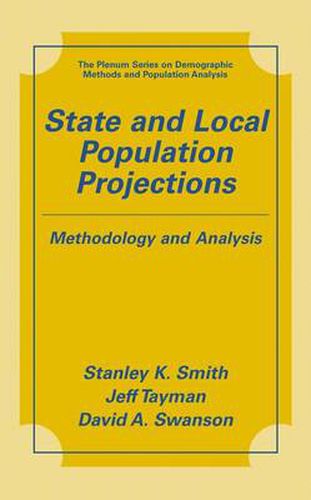Readings Newsletter
Become a Readings Member to make your shopping experience even easier.
Sign in or sign up for free!
You’re not far away from qualifying for FREE standard shipping within Australia
You’ve qualified for FREE standard shipping within Australia
The cart is loading…






This title is printed to order. This book may have been self-published. If so, we cannot guarantee the quality of the content. In the main most books will have gone through the editing process however some may not. We therefore suggest that you be aware of this before ordering this book. If in doubt check either the author or publisher’s details as we are unable to accept any returns unless they are faulty. Please contact us if you have any questions.
This text focuses on the methodology and analysis of state and local population projections. It describes the most commonly used data sources and application techniques within each of three classes of projection methods (cohort-component, trend extrapolation, and structural models) and covers the components of population growth, the formation of assumptions, the development of evaluation criteria, and the determinants of forecast accuracy. It considers the strengths and weaknesses of various projection methods, paying special attention to the unique problems of making projections for small areas, and closes with an examination of technological and methodological changes affecting the production of small-area population projections. The authors provide practical guidance to demographers, planners, and other analysts called on to construct state and local population projections. They use many examples and illustrations and present suggestions for dealing with special populations, unique circumstances, and inadequate or unreliable data; they also describe techniques for controlling one set of projections to another and for interpolating between two projections. They discuss the role of judgment and the importance of the political context in which projections are made and emphasize the utility of projections, or their usefulness for decision making in a world of competing demands and limited resources. This comprehensive book should provide readers with an understanding not only of the mechanics of commonly used population projection methods, but also of the many complex issues affecting their construction, interpretation, evaluation, and use.
$9.00 standard shipping within Australia
FREE standard shipping within Australia for orders over $100.00
Express & International shipping calculated at checkout
This title is printed to order. This book may have been self-published. If so, we cannot guarantee the quality of the content. In the main most books will have gone through the editing process however some may not. We therefore suggest that you be aware of this before ordering this book. If in doubt check either the author or publisher’s details as we are unable to accept any returns unless they are faulty. Please contact us if you have any questions.
This text focuses on the methodology and analysis of state and local population projections. It describes the most commonly used data sources and application techniques within each of three classes of projection methods (cohort-component, trend extrapolation, and structural models) and covers the components of population growth, the formation of assumptions, the development of evaluation criteria, and the determinants of forecast accuracy. It considers the strengths and weaknesses of various projection methods, paying special attention to the unique problems of making projections for small areas, and closes with an examination of technological and methodological changes affecting the production of small-area population projections. The authors provide practical guidance to demographers, planners, and other analysts called on to construct state and local population projections. They use many examples and illustrations and present suggestions for dealing with special populations, unique circumstances, and inadequate or unreliable data; they also describe techniques for controlling one set of projections to another and for interpolating between two projections. They discuss the role of judgment and the importance of the political context in which projections are made and emphasize the utility of projections, or their usefulness for decision making in a world of competing demands and limited resources. This comprehensive book should provide readers with an understanding not only of the mechanics of commonly used population projection methods, but also of the many complex issues affecting their construction, interpretation, evaluation, and use.